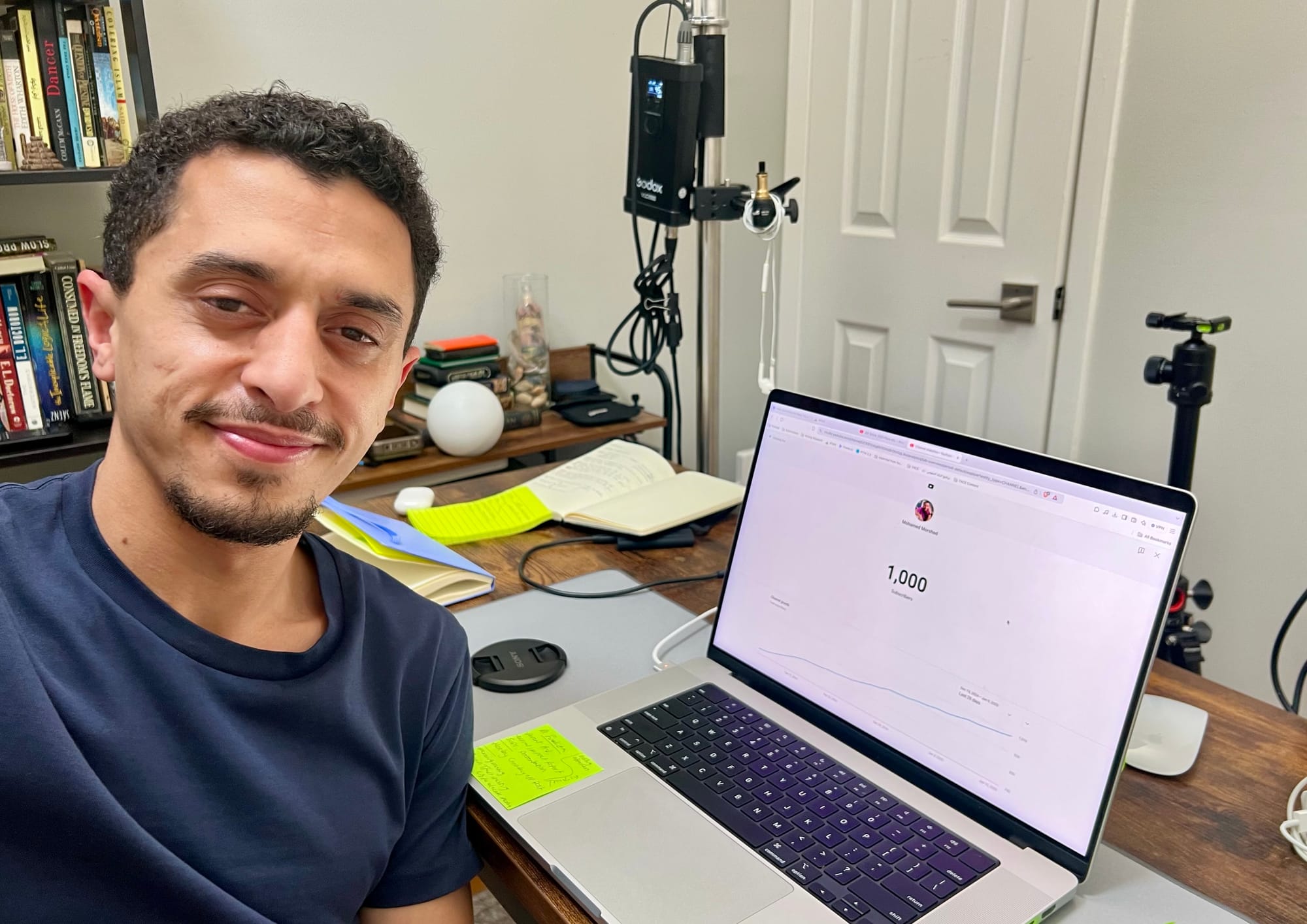Hi friends,
We all tell stories. Whether you’re sharing a childhood memory, composing an email, or jotting down ideas for a presentation, storytelling is embedded into everyday life. And writing isn’t just for novelists or journalists—it’s for anyone who wants to persuade, entertain, or create something meaningful. So I thought I’d share some thoughts on the steps it takes me to write stories. This, I hope, will help aspiring writers as much as those who care about stories but haven’t necessarily committed to writing them down. Here you go:
Step 1: The First Draft
Most of us get an idea while reading a book, talking to a friend, or taking an afternoon walk. The idea for the story is nothing but an image of a character, a smell of a place, or a feeling with no shape. We sit down, and we try to write this ambiguous inspiration onto the page. The goal at this stage is not perfection; it’s discovery. This is why it’s essential to write quickly without editing. Sit down every day and write, write, write. With each writing session, you will find out more about the story and what it is trying to be. This, if not haunted by self-criticism, is usually the most exciting stage. This is the time when I think to myself, “This will be published in the New Yorker.”
Step 2: The (Semi) Daily Writing Habit
Good writing, especially during the first draft, isn’t born from writing on inspiration or weekends. When we are not consistent, we lose the momentum of chasing after the thread of the story that allows us to dream about it. Fiction isn’t about referencing scientific papers or retelling stories that have been told by people before us. In fiction, we make believe. From our life experiences, we open a window for people to look inside a house we built. If we leave long gaps between writing sessions, we forget the names of the people living inside the house, what makes them special, and the whole reason why we opened the window of this particular house in the first place. But when we engage with our work every day, even in small ways, we tap into our subconscious, the part of our brain that daydreams to create the surprises we experience on the page. This is the part that solves the problems we face in stories while we are asleep. It’s then that writing becomes less technical and more natural.
Step 3: Celebrate Finishing the Draft
Completing a first draft is a milestone worth celebrating. It means you’ve pushed through self-doubt, silenced perfectionism, and created something tangible. Finishing a draft doesn’t mean the story is ready to publish—it’s just the beginning of a new stage: the cleaning and clarifying stage. But it’s necessary to take a moment to celebrate by treating yourself to a fast-food meal, a long walk, or simply taking a moment to acknowledge your efforts. I like to tell my wife and my writer friends that I finished a draft, and their reaction is always rewarding. This step will pay off in the future when you write your next story. This is one of the feelings your brain will be chasing when you are drafting something new, since reward mechanisms are hardwired into our brains.
Step 4: Editing
Editing is where the real magic of writing happens. This is the stage where you refine your ideas, sharpen your characters, and give your story its shape. Start by reading your draft as a whole without making changes. On the second read, you are allowed to take notes in the margins of stuff you liked and that needs improvement. This is also the part where you cut the unnecessary fat. “Kill your darlings,” Stephen King says. This could be a scene you fell in love with while writing, a sentence, or even a witty word. If it doesn’t move the story forward or clarify it, then it has to go—without mercy or remorse.
Step 5: Rewrite, Rewrite, Rewrite
I once heard an author say that the difference between writers who publish and those who don’t is their stamina for rewriting. Essentially, you want to write, rewrite, and rewrite some more until you read the story, and almost nothing gets flagged. I say almost because there is no such thing as a finished story, and often you have to stop and move on before it feels perfect. Because perfection doesn’t come. It’s a deception for procrastinating from the next story.
A side note on friends: The best rewrites happen after you share the second or third draft (whenever you feel a little proud of what you have written) with people who care about you and your writing. The feedback they give you is the stepping stone for you to take the story to a new dimension. These could be friends who are also writers or a partner. But I want to caution you against sharing your stories, especially in the beginning of your journey, with just anyone. If you are like me and all of your friends are engineers and doctors who haven’t read a book since freshman year in high school, then you will need a new set of friends for your writing. I love my friends and love hanging out with them. But I know they’ll get bored fast with my writing and will have very little to add to it—in the same way that I would not be a good person to proofread one of their medical articles. So choose your readers wisely.
Final Thoughts
There are no rules for how to write a good story, whether it’s for a magazine, a personal statement, or a graduation speech. There are principles, and most of them have become boundaries passed down from generation to generation. What I shared are things that have worked for me, and I often break them because I’m not a machine. I have a story that I couldn’t finish its first draft because I obsessed over the opening scene. Now it’s sitting somewhere in the cloud, unfinished. The goal, in the process of writing, is to learn more about ourselves as much as the stories and the characters we write. Over time, we build an intuition that helps us with making the day-to-day judgment calls that allow us to start and finish projects.
💎 New From Me
My YouTube channel just hit 1K subscribers, which is a huge milestone. I want to continue getting better at creating videos on writing, good books, and journaling—for busy people like you and me to tell our own stories, stay creative, and remain clear-minded. So thank you for riding along with me on this journey.
Here’s last week’s video on a 90-year-old book that transformed my writing:
🔖 Quote I’m pondering
"Separate the processes of creating from improving. You can’t write and edit or sculpt and polish or make and analyze at the same time. If you do, the editor stops the creator. While you invent, don’t select."
— Kevin Kelly
Source: Excellent Advice for Living: Wisdom I Wish I'd Known Earlier
📸 Through My Lens

Please give me feedback on the newsletter by replying to this email. Do you find it worth your time? What do you want more or less of? Or other suggestions?
Thank you for reading!
Mohamed
